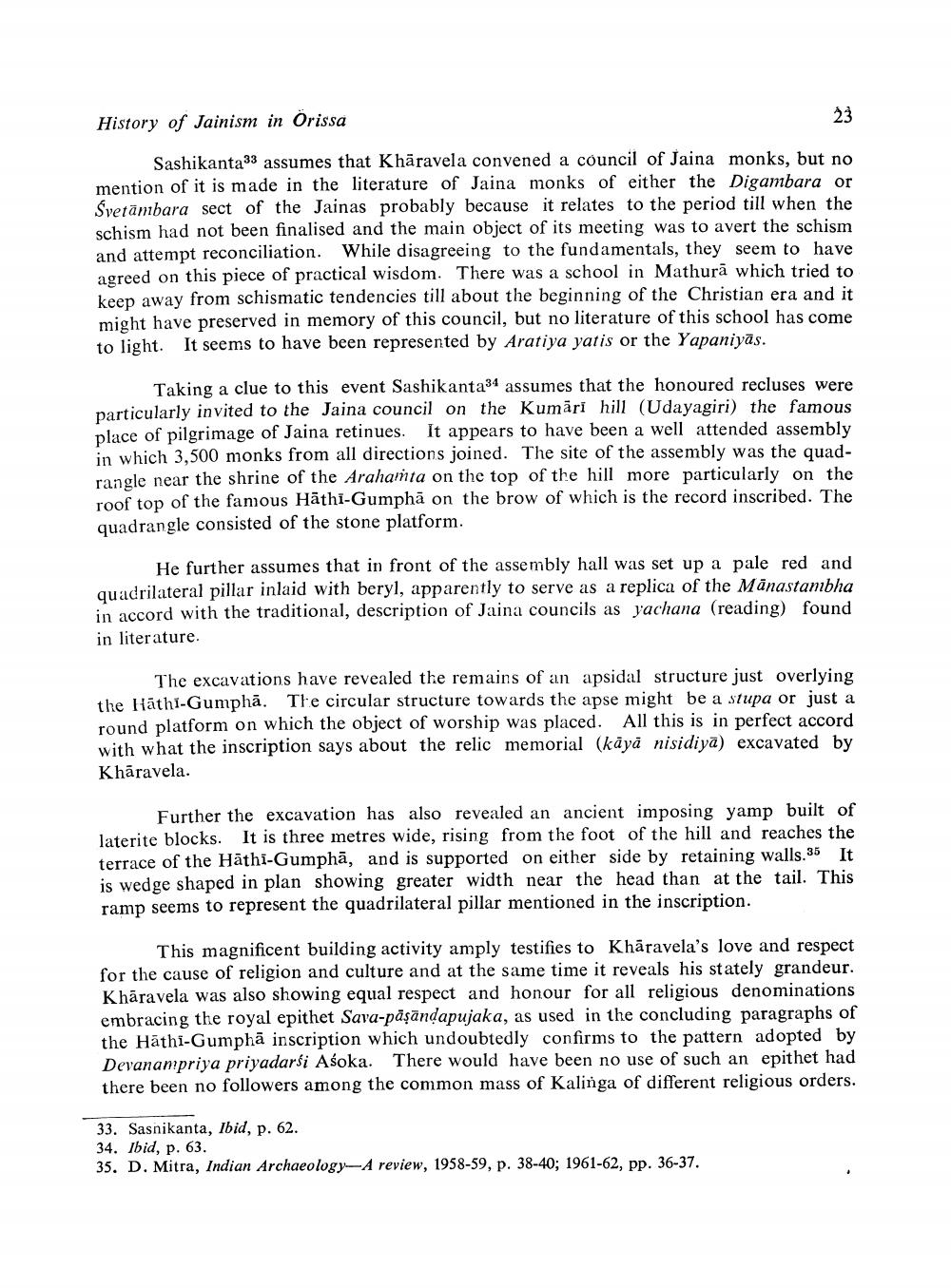________________
History of Jainism in Orissa
23
Sashikanta33 assumes that Khāravela convened a council of Jaina monks, but no mention of it is made in the literature of Jaina monks of either the Digambara or Sverambara sect of the Jainas probably because it relates to the period till when the schism had not been finalised and the main object of its meeting was to avert the schism and attempt reconciliation. While disagreeing to the fundamentals, they seem to have agreed on this piece of practical wisdom. There was a school in Mathura which tried to keep away from schismatic tendencies till about the beginning of the Christian era and it might have preserved in memory of this council, but no literature of this school has come to light. It seems to have been represented by Aratiya yatis or the Yapaniyas
Taking a clue to this event Sashikanta34 assumes that the honoured recluses were particularly invited to the Jaina council on the Kumari hill (Udayagiri) the famous place of pilgrimage of Jaina retinues. It appears to have been a well attended assembly in which 3,500 monks from all directions joined. The site of the assembly was the quadrangle near the shrine of the Arahamta on the top of the hill more particularly on the roof top of the famous Hathi-Gumpha on the brow of which is the record inscribed. The quadrangle consisted of the stone platform.
He further assumes that in front of the assembly hall was set up a pale red and quadrilateral pillar inlaid with beryl, apparently to serve as a replica of the Manastambha in accord with the traditional, description of Jaina councils as yachana (reading) found in literature.
The excavations have revealed the remains of an apsidal structure just overlying the Hathi-Gumpha. The circular structure towards the apse might be a stupa or just a round platform on which the object of worship was placed. All this is in perfect accord with what the inscription says about the relic memorial (kaya nisidiya) excavated by Khāravela.
Further the excavation has also revealed an ancient imposing yamp built of laterite blocks. It is three metres wide, rising from the foot of the hill and reaches the terrace of the Hathi-Gumphã, and is supported on either side by retaining walls. It is wedge shaped in plan showing greater width near the head than at the tail. This ramp seems to represent the quadrilateral pillar mentioned in the inscription.
This magnificent building activity amply testifies to Khåravela's love and respect for the cause of religion and culture and at the same time it reveals his stately grandeur. Khāravela was also showing equal respect and honour for all religious denominations embracing the royal epithet Sava-päşänḍapujaka, as used in the concluding paragraphs of the Hathi-Gumpha inscription which undoubtedly confirms to the pattern adopted by Devanampriya priyadarli Asoka. There would have been no use of such an epithet had there been no followers among the common mass of Kalinga of different religious orders.
33. Sasnikanta, Ibid, p. 62.
34. Ibid, p. 63.
35. D. Mitra, Indian Archaeology-A review, 1958-59, p. 38-40; 1961-62, pp. 36-37.




